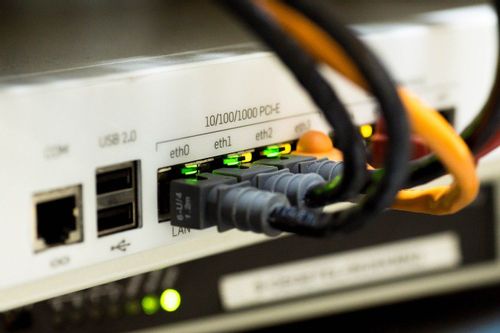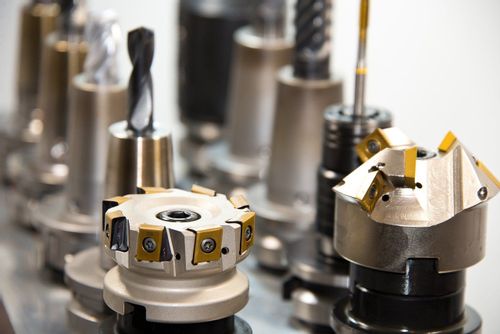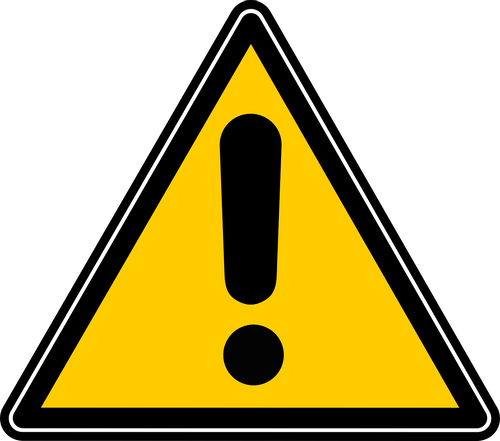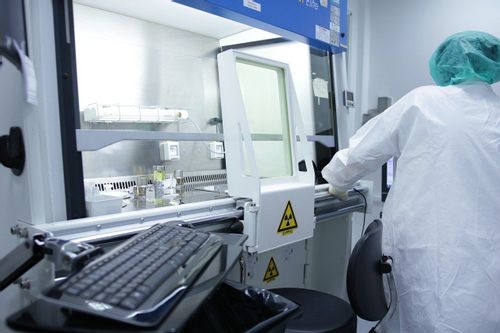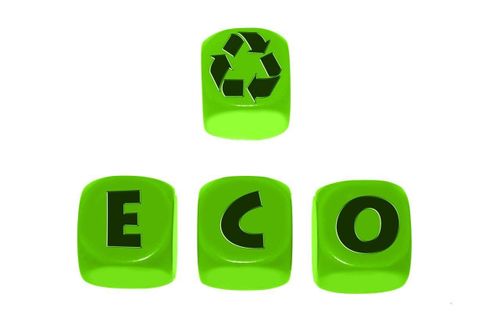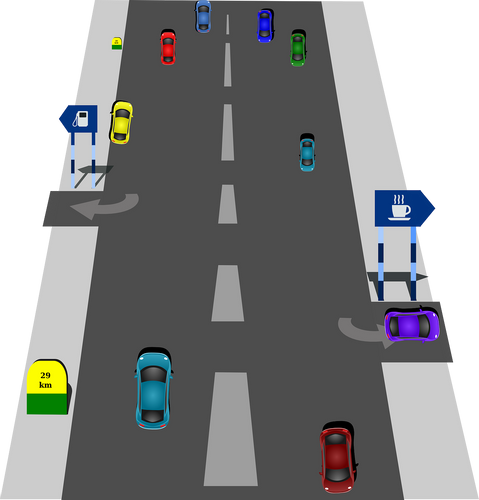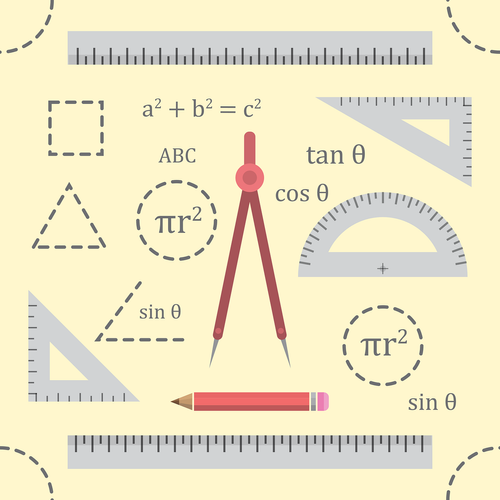Standards Packages
iTeh together with SIST has developed and compiled a comprehensive collection of standard packages to support your standard requirements. Our packages cover an array of content that includes quality management, risk management, road vehicles, machine safety, and much more. With over 200 packages to choose from, you are sure to find a collection to suit your standard needs.
Latest Standards
This International Standard specifies the minimum requirements for billing of all consumption-based utility
network services to domestic customers. It covers the processes required to produce the bill and to deal with
issues that arise after the bill has been sent, as well as the content of the billing document or statement. This
International Standard is applicable to utility network services that are unmetered, metered at the point of
delivery or metered remotely (e.g. on the supplier's own premises), and it covers any unmetered or unmeasured
charges appearing on the same bill as metered or measured charges, as well as flat rate charges.
NOTE 1 Utility network services include electricity supply, water, sanitation, gas supply, district heating and
communications.
NOTE 2 The requirements given in this International Standard are also applicable to other consumers who are legally
entitled to use the service provided by the supplier, except where in order to comply with privacy or data protection
requirements, it is necessary for the supplier to obtain the authority of the registered customer before dealing with another
consumer on billing matters.
This International Standard does not cover pricing, except for a requirement to provide information to
customers. It is only applicable to billing for consumption-based utility network services and it applies to all bills
or statements for utility network services where there is an ongoing account relationship between the customer
and the supplier, regardless of the payment method used.
NOTE 3 This includes bills for metered consumption, bills where a formula is used to estimate consumption (e.g. water
bills based on the number of persons per household or the size of the house), or where a flat rate fee is charged regardless
of consumption (e.g. telephony or internet bills where the tariff allows unlimited usage). It also applies to prepayment
customers, where a bill or account from the supplier is necessary to enable the customer to reconcile the amount paid
in advance with the cost of consumption, or where the customer expects to receive a bill based on point of sale or other
advertising (e.g. mobile telephony and energy metering) where codes, keys, electronic dongles or electronic cards are
used to load and reload the service and to indicate what was purchased.
NOTE 4 Services that are not billed [e.g. mobile telephony paid for by pre-purchased SIM (Subscriber Identity Module)
cards that are unmetered] and services that are funded directly by the taxpayer without bills being issued are not covered
by this International Standard.
NOTE 5 Many of the key principles in this International Standard also apply to all forms of billing, and suppliers are
therefore encouraged to adopt the relevant requirements in this International Standard for billing of other services.
- Standard27 pagesEnglish languagesale 10% offe-Library read for1 day
- Standard21 pagesEnglish languagesale 15% off
This document specifies a method of determining the water content of rocks. This document is applicable to the laboratory determination of the water content of a rock test specimen by oven-drying within the scope of geotechnical investigations. The oven-drying method is the definitive procedure used in usual laboratory practice. The practical procedure for determining the water content of a rock is to determine the mass loss on drying the test specimen to a constant mass in a drying oven controlled at a given temperature. The mass loss is assumed to be due to free water and is referenced to the remaining dry mass of the test specimen. NOTE This document fulfils the requirements of the determination of water content of rock for geotechnical investigation and testing according to EN 1997-2.
- Standard9 pagesEnglish languagesale 15% off
- Standard19 pagesFrench languagesale 15% off
- Draft6 pagesEnglish languagesale 10% offe-Library read for1 day
IEC 62590-1:2025 specifies the common requirements and definitions for all power converter applications in fixed installations for power supply of railway systems. This document applies to fixed installations of following electric traction systems: railway networks, metropolitan transport networks including metros, tramways, trolleybuses and fully automated transport systems, magnetic levitated transport systems, electric road systems. This document applies to AC/DC converters, DC converters and AC converters. Converters for improvement of power quality and for energy saving are also included. Converters connected to electric traction systems feeding 3AC, 1AC or DC systems for auxiliary purpose are not in the scope of this document but some aspects such as insulation coordination and railway specific conditions can be referred to. This document, in conjunction with the other parts of IEC 62590, cancels and replaces IEC 62589:2010 and the former IEC 62590:2019. This document includes the following significant technical changes with respect to IEC 62589:2010 and the former IEC 62590:2019: a) Split into common requirements and special requirements for different converters; b) Interface Model for the different systems connected; c) Split into circuits with their requirements like insulation coordination; d) Energy efficiency addressed.
- Draft50 pagesEnglish languagesale 10% offe-Library read for1 day
This document specifies the method for non-destructive thickness measurement via the magnetic type of electrodeposited nickel coatings, also called “e-nickel”, on magnetic or non-magnetic substrates. It is possible that the method is not applicable to autocatalytic (electroless) nickel coatings, since these coatings are often non-magnetic due to their chemical composition. For the purposes of this document, two types of substrates are distinguished: a) nickel coatings on magnetic substrates (type A coatings); b) nickel coatings on non-magnetic substrates (type B coatings). Not all instruments are applicable to both types of coating. The effective measuring ranges of instruments using the principle of magnetic attraction are up to 50 µm for type A coatings and up to 25 µm for type B coatings. For instruments using the principle of reluctance, the effective ranges are much greater, up to 1 mm or even more. This method is applicable to both types of coatings.
- Standard8 pagesEnglish languagesale 15% off
- Standard8 pagesFrench languagesale 15% off
This document specifies physical and chemical requirements and test methods for oral rinses. It also specifies requirements on the accompanying information to be given in the manufacturer's instructions for use and on containers as well as the requirements for packaging. Common labelling aspects are specified in order to enhance international understanding and trade. This document is not applicable to other delivery systems (e.g. mouth sprays, foams, powders). It is not intended to describe regulatory aspects, e.g. methods of prescription. This document is not applicable to oral rinses available by prescription only.
- Standard8 pagesEnglish languagesale 15% off
- Standard9 pagesFrench languagesale 15% off
IEC 60269-3:2024 is divided into four fuse systems, each dealing with a specific example of standardized fuses for use by unskilled persons. This part applies to “gG” fuses only. Unskilled persons do not have technical knowledge or sufficient experience. To avoid dangers, which electricity may create, the relevant part of the fuse standard shall provide requirements for maximum safety in service. IEC 60269-3 provides four systems for use by unskilled persons. Instructions for the safe operation of fuse-links are provided in the manufacturer’s literature. All systems provide their own mechanical solution to avoid the use of a fuse-link with higher current rating (non-interchangeability) whereas the protection of cables and lines is ensured. The applicant is required to take care to replace a fuse-link by the same type.
- Draft121 pagesEnglish languagesale 10% offe-Library read for1 day
IEC 60730-2-23:2025 applies to the safety of electrical, electro-mechanical and electronic sensors including sensing elements and any conditioning circuitry. Sensors covered under the scope of this document serve only to transform an activating quantity into a usable output and do not perform a control operation as defined in IEC 60730-1. This document applies to sensors in so far as defining the reliability and accuracy of their inherent operating characteristics and corresponding response under normal and abnormal conditions within the sensor. Sensors, as defined herein, are used in or as part of an automatic electrical control or as independently mounted devices in connection with controls and control systems. The use of this document for other applications in which sensors are used is possible provided that the appropriate safety is maintained as defined by the end product standard. This document applies to discrete sensors constructed of, but not limited to, conductive, semi-conductive, or substrate, for the detection of activating quantities such as voltage, current, temperature, pressure, humidity, light (e.g. optical), gasoline vapours, and the like. NOTE 1 Future consideration will be given to other sensor technologies constructed of other materials such as chemical, mechanical and micro-electromechanical systems (MEMS), along with other activating quantities like mass flow, liquid, movement, weight, vibration, or other as needed. This document applies to sensing element(s) as well as any electronic hardware, software, or other conditioning circuits that are inherent to the sensor and relied upon to reliably transform the input signal into a useable response signal (output) for functional safety purposes. Conditioning circuits that are inseparable from the control for which the sensing element relies upon to perform its desired function are evaluated by the requirements of the relevant control Part 2 standard and/or IEC 60730-1. NOTE 2 Additional requirements can be also applied by the application standard in which the sensor is used. Throughout this document, whenever it is indicated that the IEC 60730-1 requirements are applicable, the term "control(s)", is replaced by the term "sensor(s)", and the term "equipment" is replaced by the term "control", as they are used in IEC 60730-1, respectively, unless otherwise specified herein. This document does not apply to sensors explicitly described in another relevant part 2 of the IEC 60730 series. NOTE 3 For example, a flame sensor as described in IEC 60730-2-5.
- Draft26 pagesEnglish languagesale 10% offe-Library read for1 day
These supplementary requirements apply to fuse-links for application in equipment containing semiconductor devices for circuits of nominal voltages up to 1 000 V AC. or 1 500 V DC. and also, in so far as they are applicable, for circuits of higher nominal voltages. NOTE 1 Such fuse-Iinks are commonly referred to as "semiconductor fuse-links". NOTE 2 In most cases, a part of the associated equipment serves the purpose of a fuse-base. Owing to the great variety of equipment, no general rules can be given; the suitability of the associated equipment to serve as a fuse- base should be subject to agreement between the manufacturer and the user. However, if separate fuse-bases or fuse-holders are used, they should comply with the appropriate requirements of IEC 60269-1. NOTE 3 IEC 60269-6 (Low-voltage fuses – Part 6: Supplementary requirements for fuse-links for the protection of solar photovoltaic energy systems) is dedicated to the protection of solar photovoltaic energy systems. NOTE 4 These fuse-links are intended for use on systems employing the standardized voltages and tolerances of IEC 60038. Tests carried out on fuse-links in accordance with previous editions of this standard shall remain valid until such time as complimentary equipment has evolved to the standardized voltages and tolerances of IEC 60038. The object of these supplementary requirements is to establish the characteristics of semiconductor fuse-links in such a way that they can be replaced by other fuse-links having the same characteristics, provided that their dimensions are identical. For this purpose, this standard refers in particular to a) the following characteristics of fuses: 1) their rated values; 2) their temperature rises in normal service; 3) their power dissipation; 4) their time-current characteristics; 5) their breaking capacity; 6) their cut-off current characteristics and their I2t characteristics; 7) their arc voltage characteristics; b) type tests for verification of the characteristics of fuses; c) the markings on fuses; d) availability and presentation of technical data (see Annex BB).
- Draft61 pagesEnglish languagesale 10% offe-Library read for1 day
IEC 60947-7-1:2025 specifies requirements for terminal blocks and test disconnect terminal blocks according to Annex D with screw-type or screw-less-type clamping units primarily intended for industrial or similar use and to be fixed to a support to provide electrical and mechanical connection between copper conductors. It applies to terminal blocks intended to connect round copper conductors, with or without special preparation, having a cross-section between 0,05 mm2/30 AWG and 300 mm2/600 kcmil, intended to be used in circuits of a rated voltage not exceeding 1 000 V AC up to 1 000 Hz or 1 500 V DC. The tests on terminal blocks are made with AC or DC supply as required in relevant clauses of this document. This fourth edition cancels and replaces the third edition published in 2009. This edition constitutes a technical revision. This edition includes the following significant technical changes with respect to the previous edition: a) Scope extension for smaller conductor cross-sections; b) Implementation of a contact pressure via insulation material (CoPI) test; c) Introduction of new informative Annex E for larger cross-sections; d) Reorganisation of all tables merged into two tables for electrical and mechanical values; e) Implementation of AWG-sizes conductor types as an equivalent type of metric conductor with examples in Annex C; f) Reorganisation of Annex D test disconnect terminal blocks to enhance readability; g) Introduction of new informative Annex A for main characteristics of terminal blocks.
- Draft49 pagesEnglish languagesale 10% offe-Library read for1 day
- Draft22 pagesEnglish languagesale 10% offe-Library read for1 day
The network-based media processing (NBMP) framework defines the interfaces including both data formats and application programming interfaces (APIs) among the entities connected through digital networks for media processing. Users can access and configure their operations remotely for efficient, intelligent processing. This document describes and manages workflows to be applied to the media data. This process includes uploading of media data to the network, instantiation of the media processing tasks, and configuration of the tasks. The framework enables dynamic creation of media processing pipelines, as well as access to processed media data and metadata in real-time or in a deferred way. The media and metadata formats used between the media source, workflow manager and media processing entities in a media processing pipeline are also specified.
- Standard178 pagesEnglish languagesale 15% off
IEC 61169-1-9:2025 specifies test methods for the safety wire hole pull-out of RF connectors. This document is applicable to the connectors with safety wire holes.
- Draft5 pagesEnglish languagesale 10% offe-Library read for1 day
This document specifies a reference architecture for event-based syndromic surveillance systems for infectious diseases. The system reference architecture addresses architectural components including concepts, data sources, and outputs of syndromic surveillance system. From the perspective of the diagnostic process,[ REF Reference_ref_11 \r \h 11 08D0C9EA79F9BACE118C8200AA004BA90B0200000008000000110000005200650066006500720065006E00630065005F007200650066005F00310031000000 ] this document covers the processes from the symptom-onset stage to the health-behaviour stage, which is prior to the healthcare-encounter stage. Non-infectious health hazards, such as natural disasters, human-induced emergencies and chronic diseases, and their associated surveillance systems are beyond the scope of this document.
- Technical specification11 pagesEnglish languagesale 15% off
This document specifies the characteristics of valves made from unplasticized polyamide (PA-U) in accordance with ISO 16486-1, intended to be buried and used for the supply of gaseous fuels.
NOTE 1 For the purpose of this document the term gaseous fuels include for example natural gas, methane, butane, propane, hydrogen, manufactured gas, biogas, and mixtures of these gases. Additional information about the suitability for 100 % hydrogen and its admixtures with natural gas is given by ISO 16486-1:2023, Annex C and Annex D.
It is applicable to isolating unidirectional and bi-directional valves with spigot ends or electrofusion sockets intended to be fused with PA-U pipes conforming to ISO 16486-2 and PA-U fittings conforming to ISO 16486-3.
This document also specifies the test parameters for the test methods it describes.
In conjunction with ISO 16486-1, ISO 16486-2, ISO 16486-3 and ISO 16486-5, this document is applicable to PA-U valves and their joints and to joints with components of PA-U and other materials intended to be used under the following conditions:
a) a maximum operating pressure (MOP) of up to and including 18 bar1), or limited to 16 bar under regional CEN requirements, at a reference temperature of 20 °C for design purposes;
NOTE 2 For the purpose of this document and the references to ISO 8233, MOP is considered to be nominal pressure.
b) an operating temperature of −20 °C to 40 °C;
NOTE 3 For operating temperatures between 20 °C and 40 °C, derating coefficients are specified in ISO 16486-5.
This document covers valves for pipes with a nominal outside diameter, dn, ≤400 mm.
- Standard30 pagesEnglish languagesale 10% offe-Library read for1 day
IEC 63522-56:2025 This part of IEC 63522 is used for testing along with the appropriate severities and conditions for measurements and tests designed to assess the ability of specimens to perform under expected conditions of transportation, storage and all aspects of operational use.
The object of this test is to define a standard test method for evaluation of appropriate materials to withstand mechanical pressure at elevated temperatures without undue deformation.
- Standard12 pagesEnglish languagesale 10% offe-Library read for1 day
- Amendment7 pagesEnglish languagesale 10% offe-Library read for1 day
IEC 63522-9:2025 This document used for testing all kinds of relays and evaluates their ability to perform under expected conditions of transportation, storage and all aspects of operational use. It defines standard test methods to determine the ability of the relay to withstand certain climatic test conditions, a sequence of such climatic test conditions or climatic storage conditions.
- Standard15 pagesEnglish languagesale 10% offe-Library read for1 day
IEC 63522-44:2025 This part of IEC 63522 is used for testing all kinds of electrical relays and for evaluating their ability to perform under expected conditions of transportation, storage and all aspects of operational use. The object of this test is to define a standard test method for salt mist.
- Standard12 pagesEnglish languagesale 10% offe-Library read for1 day
RTS/LI-00276-1
- Standard64 pagesEnglish languagesale 15% off
- Technical specification64 pagesEnglish languagesale 10% offe-Library read for1 day
Benefits

Full Standards Solution
Our catalog includes not only latest standards but also full meta information about related standardization project lifecycle.

Cost Effective
Our PRICE MATCH GUARANTEE policy with multi-level volume discounts gives our clients the best option in the market. In addition, you can get access to the standards for 3, 10, or 30 days.

Stay Notified
Get alerted to the latest revisions and new standards in the Weekly Newsletter. Standards are constantly changing. Don’t miss a revision that can impact your business.
About Us
iTeh Inc is a software development and IT consulting team of professionals who provide consulting, development and implementation of solutions for all types of businesses.
In cooperation, with the Slovenian Institute of Standardization (SIST), we create a unique solution that covers all aspects of the lifecycle of Standardization organizations. iTeh Standards is a part of the solution that helps SIST to provide and sell their products to Customers.
iTeh Standards Store is an evolving project, our goal is to build long-term relationships with our customers. We believe in delivering quality services to solve our customers' challenges and define success by exceeding our customers' expectations. We are always ready to listen and our experience allows us to provide our customers with helpful effective suggestions. You can contact us by email.
We are committed to providing the best possible experience for our customers.
Compliance with international standards is increasingly becoming one of the key competitive advantages in the global market. Our company creates all conditions for the most comfortable implementation of new documents and norms in the processes carried out by your organization. Some of the key advantages of working with us are:
- Cost-effective - multi-level discounts and permanent updates of the functions give our clients the best option on the market.
- e-Library - access to standards for a period of time of your choice. It is a cost-effective solution for keeping updated with the newest standards.
- Company-wide documents - create a company account and connect all employees with access to purchased standards, e-Library documents, and packages.
- All in one spot - all purchased standards are kept in one place with controlled access by the account administrator.
- Client-centric - providing quality consulting is the prerogative and incentive to create new products that accompany your success and scale.
- 24 / 7 client support
We are dedicated to building mutually beneficial and long-term relationships with our clients. That is why our team focuses on creating services to help our customers develop and achieve new productive results.








